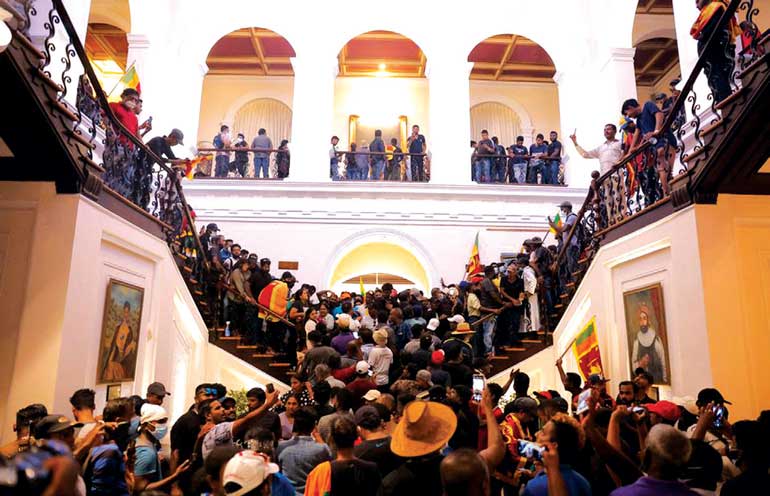Sunday Nov 30, 2025
Sunday Nov 30, 2025
Tuesday, 12 July 2022 02:15 - - {{hitsCtrl.values.hits}}

Demonstrators protest inside the President's House, after President Gotabaya Rajapaksa fled, amid the country's economic crisis - Reuters
REUTERS: A changing of Sri Lanka’s political guard may be a step towards shoring up its collapsed economy. President Gotabaya Rajapaksa agreed to resign after protesters stormed the presidential palace on Saturday.
Prime Minister Ranil Wickremesinghe, whose private house was set on fire, will go too; he also serves as Finance Minister. Citizens and creditors alike, though, face a long road to recovery.
Opposing parties look set to form a unity Government. That might make it easier to accept sweeping reforms that are a pre-requisite to any deal with the International Monetary Fund for a $ 3 billion rescue package. The uprising came days after Wickremesinghe declared the country bankrupt and petrol pumps ran dry. Sri Lanka’s 22 million people face shortages of food and medicine: consumer price inflation in the capital Colombo is running at 55% year-on-year.
Getting the IMF on side probably requires slashing Sri Lanka’s public debt ratio by at least one third. It currently stands at an eye-watering 120% of GDP. Commercial bondholders face the biggest losses. About 40 or so international sovereign bonds account for over one third of Sri Lanka’s $ 50 billion of foreign currency external debt.
A $ 1 billion bond maturing this month trades at 39 cents on the dollar compared to 74 cents in February. The implied 61% haircut is well above the 37% average for sovereign bonds recast in the 30-odd years to 2010, per a National Bureau of Economic Research working paper. Some of Sri Lanka’s trade as low as 29 cents. Multilateral and bilateral lenders, the other major creditors, typically extend cheaper loans and so are less likely to forego principal. So far, India is doing most of the heavy lifting to prop up the island state, providing some $ 3.5 billion of support including through credit lines and fuel. China, which held 10% of Sri Lanka’s external debt as of April 2021, promised a $ 1.5 billion currency swap but the tough terms make it unusable. Indeed, the People’s Republic is showing signs of stinginess as it faces large repayment issues from Pakistan to Zambia.
An ugly global economy means all stakeholders face more pain, but they will also be pickier in what they agree to. That raises the prospect of lengthy and difficult debt workouts.